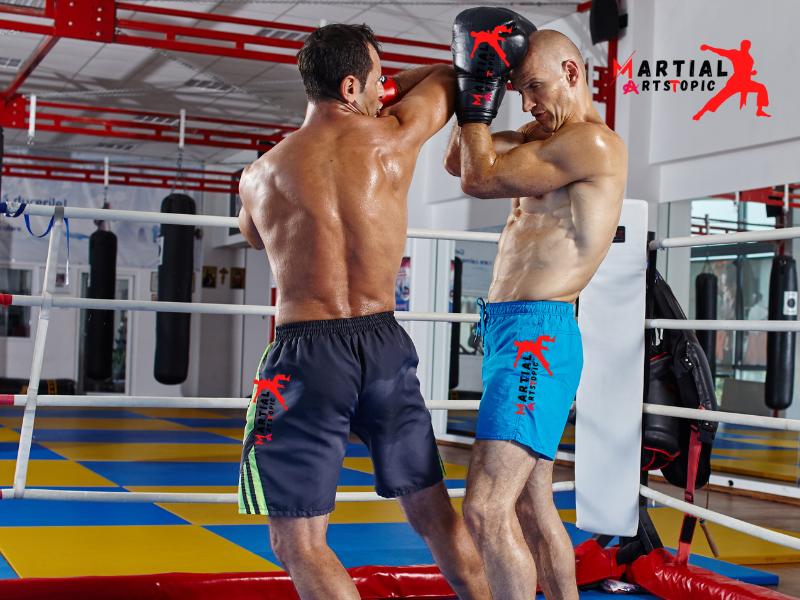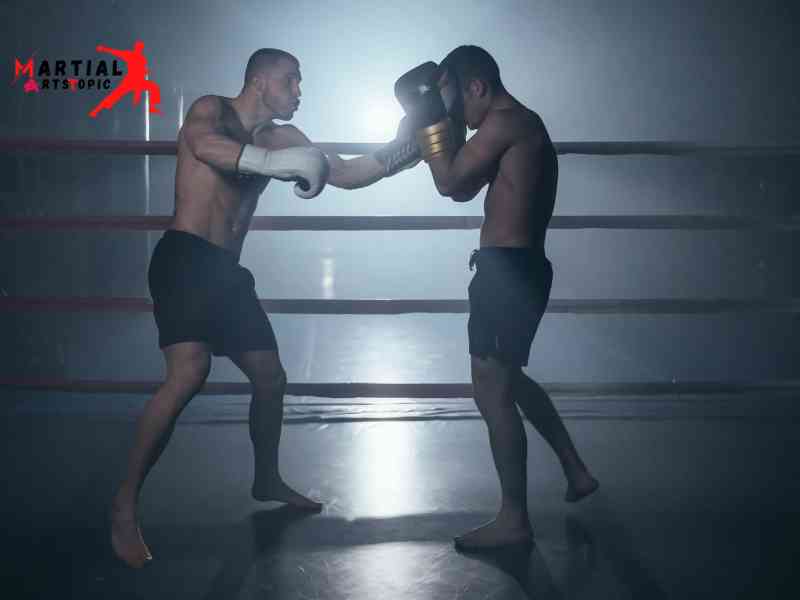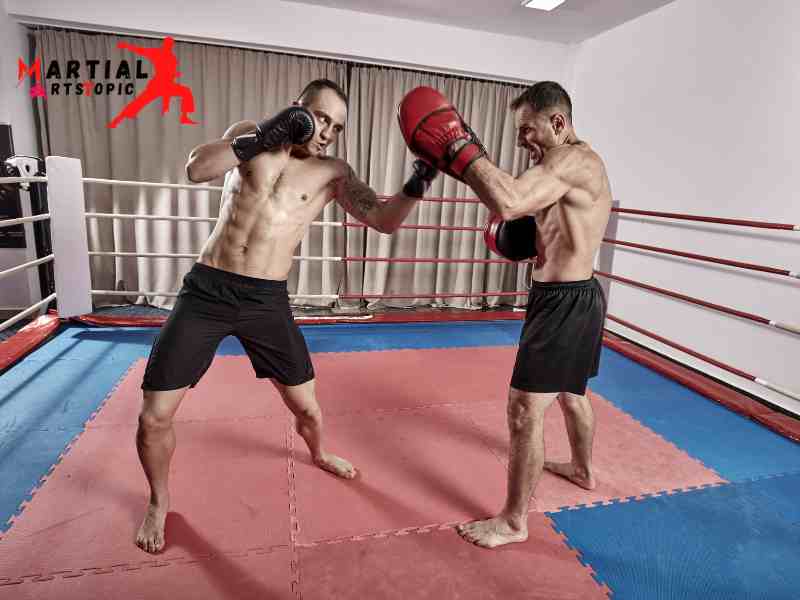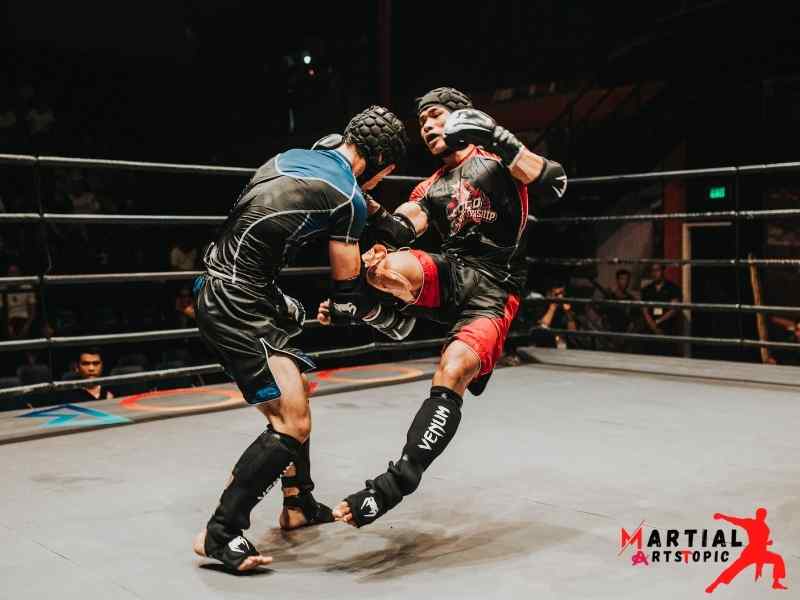
Unlocking the Secrets of the Muay Thai Clinch
Unlocking the Secrets of the Muay Thai Clinch The Muay Thai clinch is a powerful and effective technique used in the world of martial arts. This close-quarter combat technique allows fighters to control their opponent, deliver devastating strikes, and potentially secure a submission. If you are a fan of Muay Thai or someone looking to expand their martial arts skills, understanding and mastering the Muay Thai clinch is essential.
What is the Muay Thai Clinch?
The Muay Thai clinch, also known as the plum or the Thai clinch, is a grappling technique utilized in the sport of Muay Thai. It involves grabbing the back of the opponent’s head, neck, or collar, and controlling their body movements. Once in the clinch, fighters can execute a wide range of strikes, knees, and elbows, making it a highly versatile and devastating technique.
Key Elements of the Muay Thai Clinch
There are several key elements to focus on when mastering the Muay Thai clinch:
- Control: The first step in the clinch is to establish control over your opponent. They can achieve this by gripping their neck, collar, or head, and using your arms, shoulders, and core strength to maintain a solid grip. By controlling your opponent’s movements, you can dictate the pace of the fight and set up powerful strikes.
- Balance and Footwork: Maintaining balance is crucial in the clinch. Proper footwork allows you to control the distance and angle of your strikes while preventing your opponent from breaking free. Being light on your feet and having good footwork will enable you to stay in control and launch effective attacks.
- Striking: The Muay Thai clinch is not just about controlling your opponent; it is also an opportunity to land devastating strikes. By utilizing your knees, elbows, and forearms, you can deliver powerful blows that can stun or even knock out your opponent. Learning proper striking techniques and timing is essential to maximize the effectiveness of your strikes.
- Defense: While in the clinch, defense is as important as offense. You must be able to defend against your opponent’s strikes and attempts to break free. By maintaining a tight guard and using proper head movement, you can avoid taking unnecessary damage and keep control of the clinch.
Training Tips for Mastering the Muay Thai Clinch
To unlock the secrets of the Muay Thai clinch, consider incorporating the following training tips into your routine:
- Technique Drills: Practice specific clinch techniques repeatedly to improve muscle memory and reflexes. Focus on maintaining control, footwork, and transitioning smoothly between strikes.
- Sparring: Regular sparring sessions will help you apply the techniques learned in training. By sparring with different opponents, you can experience different clinch styles and adapt your strategy accordingly.
- Strength and Conditioning: Developing core strength, upper body strength, and cardiovascular endurance is crucial for executing the Muay Thai clinch effectively. Incorporate strength and conditioning exercises such as kettlebell swings, squats, and core exercises into your training routine.
- Flexibility: Flexibility plays a significant role in the clinch. Regular stretching exercises, such as hip openers and shoulder stretches, will enable you to move more freely and generate more power in your strikes.
- Seek Professional Guidance: Consider training with experienced Muay Thai instructors or seeking private coaching to receive personalized guidance and feedback on your technique.
Unleash the Power of the Muay Thai Clinch
The Muay Thai clinch is a formidable technique that can give you a significant advantage in the ring or in self-defense situations. By mastering the key elements, training diligently, and seeking professional guidance, you can unlock the secrets of the Muay Thai clinch and enhance your overall martial arts skills. Remember, practice makes perfect, so dedicate yourself to honing your technique, and soon you’ll be unleashing the power of the Muay Thai clinch like a true warrior.
The Evolution of the Muay Thai Clinch: From Tradition to Modern Combat
In the world of martial arts, few techniques are as effective and revered as the Muay Thai clinch. This close-quarters grappling maneuver has a rich history and has developed over the years to become an essential component of modern combat sports.
The Traditional Muay Thai Clinch
Originating in Thailand, Muay Thai is a martial art known for its devastating strikes and powerful clinch techniques. The traditional Muay Thai clinch involves wrestlers locking their arms around their opponent’s neck or head, gaining control and setting up devastating knee strikes. This technique requires a deep understanding of balance, leverage, and timing.
The Evolution of the Muay Thai Clinch
As the popularity of Muay Thai spread across the globe, fighters from different disciplines started incorporating the clinch into their arsenals. This cross-pollination of techniques led to the evolution of the Muay Thai clinch, making it a formidable weapon in various combat sports, including mixed martial arts (MMA).
Muay Thai Clinch in MMA

In the world of MMA, the Muay Thai clinch has become a crucial skill for fighters looking to dictate the pace of the fight and inflict damage on their opponents. With the addition of other grappling styles, such as Brazilian Jiu-Jitsu and wrestling, the clinch has become even more versatile.
The Muay Thai clinch allows fighters to control their opponents, neutralize striking power, and unleash devastating knees, elbows, and dirty boxing techniques. This close-quarters battle demands a high level of clinch mastery, footwork, and awareness.
Effective Muay Thai Clinch Training Tips and Techniques
Welcome to our comprehensive guide on mastering the art of Muay Thai clinch techniques. In this blog post, we will inspect the intricacies of the muay thai clinch and provide you with effective techniques to dominate your opponents. Whether you are a seasoned practitioner or a beginner eager.
Understanding the Muay Thai Clinch
Before diving into the techniques, it is crucial to understand the fundamentals of the muay thai clinch. Also known as the “plum,” the clinch is a close-range grappling position used to control and strike opponents. It allows fighters to immobilize their opponents’ movements and deliver devastating knee strikes, elbows, and punches. Mastering the clinch can give you a significant advantage in the ring.
Basic Clinch Techniques
- Collar Tie: The collar tie is the foundation of the clinch. Grab your opponent’s neck with one hand and their tricep with the other, controlling their upper body and dictating the pace of the fight.
- Double Collar Tie: Similar to the collar tie, but this time, use both hands to control your opponent’s neck. This technique provides superior control and balance, giving you the ability to launch powerful strikes.
- Over hook Clinch: In this technique, one arm goes over your opponent’s shoulder while the other arm hooks their arm. This technique is effective in countering strikes and setting up powerful knee strikes.
- Under hook Clinch: The under hook clinch involves one arm going under your opponent’s arm and securing it. This position allows for control, throws, and sweeps, giving you the upper hand.
Advanced Clinch Techniques
- Knee Strikes: The clinch is renowned for its devastating knee strikes. Learn how to generate power by driving your hips forward while simultaneously pulling your opponent towards you. Aim for the ribs, thighs, or head for maximum impact.
- Elbow Strikes: Elbows are lethal weapons in the clinch. Master various elbow strikes, such as the diagonal, horizontal, or spinning elbow, to inflict serious damage on your opponent.
- Off-Balancing Techniques: Utilize sweeps, trips, and footwork to off-balance your opponent and create openings for strikes. Proper timing and execution are crucial for successful off-balancing techniques.
- Defense and Escapes: Equally important as offense, mastering defensive techniques such as hand positioning, footwork, and countering can help you neutralize your opponent’s attacks and create opportunities for your own strikes.
Training Tips and Drills
To truly excel in the muay thai clinch, consistent training is essential. Here are some tips and drills to enhance your clinch skills:
- Shadow Boxing: Practice your clinch techniques in front of a mirror to perfect your form, balance, and posture.
- Partner Drills: Work with a training partner to practice clinch techniques, focusing on control, strikes, and transitions.
- Heavy Bag Work: Incorporate knee and elbow strikes into your heavy bag training, aiming for accuracy and power.
- Sparring: Regular sparring sessions will help you apply your clinch techniques in a live scenario and improve your timing and reaction speed.
Muay Thai Clinch: Different Variations and Styles
Muay Thai Clinch: Exploring the Varying Techniques and Styles When it comes to Muay Thai, one of the most crucial aspects that sets it apart from other combat sports is the clinch. The Muay Thai clinch is a grappling technique that allows fighters to control their opponents in close-quarters combat.
The Muay Thai clinch, also known as the “plum,” involves the fighter securing a grip on their opponent’s neck or head, controlling their movements and limiting their striking capabilities. This close-quarter technique has proven to be an invaluable asset for Muay Thai practitioners, providing them with the ability to dominate their opponents in the ring.
There are several variations and styles of the Muay Thai clinch, each with its unique set of techniques and strategies. Let’s inspect some of these variations:
- Traditional Clinch: This is the most commonly used clinch technique in Muay Thai. In the traditional clinch, fighters secure a tight grip on their opponent’s neck with both hands, establishing control. From here, they can deliver powerful knee strikes, sweeps, and off-balancing techniques to gain an advantage.
- Side Clinch: As the name suggests, the side clinch involves the fighter positioning themselves to the side of their opponent. This variation allows for a greater range of strikes and throws, making it an effective technique for countering an opponent’s attacks.
- Low Clinch: In the low clinch, the fighter aims to control their opponent by securing a grip around their waist or hips. This technique is particularly useful for neutralizing an opponent’s knees and elbows, as well as setting up takedowns and sweeps.
- Long Clinch: Unlike the traditional clinch, the long clinch involves extending the arms to create distance between the fighter and their opponent. This technique is ideal for fighters with longer reach, as it allows them to maintain control while still being able to strike effectively.
- Neck Wrestling: This style of clinch emphasizes controlling the opponent’s head and neck using various grips and movements. Neck wrestling techniques can be used to tire out an opponent, disrupt their balance, or set up devastating knee strikes.
The versatility of the Muay Thai clinch is what makes it such a valuable technique for fighters. It not only allows them to control their opponents but also provides opportunities for devastating strikes and effective takedowns. Whether it’s the traditional clinch, side clinch, low clinch, long clinch, or neck wrestling, each variation offers its unique advantages and requires a specific set of skills to master.
Common Mistakes and How to Avoid Them in the Muay Thai Clinch
The Muay Thai clinch is a crucial aspect of this ancient martial art, offering fighters a range of attacking and defensive techniques. However, mastering the clinch can be challenging, even for experienced practitioners.The Muay Thai clinch and provide valuable tips on how to avoid them. So, whether you are a beginner or a seasoned fighter, read on to enhance your clinch game in the ring!
Lack of Proper Body Positioning

One of the most frequent errors fighters makes in the Muay Thai clinch is neglecting their body positioning. It is vital to maintain a solid base and control the opponent’s balance. Failure to do so can result in being thrown off balance, leaving you vulnerable to strikes and takedowns.
To avoid this mistake, focus on keeping your center of gravity low, while constantly adjusting your stance to maintain balance. Keep a firm grip on your opponent’s neck or arms and use your hips to control their movement.
Insufficient Control of the Neck and Arms
Another common mistake is not having a powerful grip on your opponent’s neck or arms. Without proper control, your opponent can easily break free, limiting your offensive and defensive options.
To overcome this mistake, practice strengthening your grip by squeezing your hands and fingers. Use your thumbs to press into the back of your opponent’s neck while using your fingers to secure a tight hold. Additionally, ensure that your elbows are close to your body, allowing for better control.
Neglecting Strikes and Knees
A common misconception is that the clinch is solely for grappling and clinching purposes. Neglecting to incorporate strikes and knees can make your clinch predictable and less effective.
To avoid this mistake, add strikes and knees into your clinch game. Utilize quick punches, elbows, and devastating knee strikes to keep your opponent off balance and create openings for takedowns or further strikes.
Over committing to a Single Technique
Focusing too much on a single technique can limit your options and make you predictable in the clinch. It is essential to diversify your techniques to keep your opponent guessing.
To overcome this mistake, continually train and develop a wide repertoire of clinch techniques. Incorporate sweeps, throws, and various grips to keep your opponent off-guard and increase your chances of success.
Failure to Maintain Awareness
Losing situational awareness is a grave mistake in any combat sport, and the Muay Thai clinch is no exception. Ignoring your surroundings can lead to unexpected strikes or takedowns.
To avoid this mistake, constantly scan your surroundings while in the clinch. Be aware of your opponent’s movements, the distance to the ropes, and any potential openings for attacks or escapes.
Muay Thai Clinch for Self-Defense: Practical Applications Outside the Ring
Muay Thai Clinch for Self-Defense: Practical Applications Outside the Ring Muay Thai, also known as the Art of Eight Limbs, is a martial art that originated in Thailand. It is well-known for its devastating striking techniques, but one aspect of Muay Thai that is often overlooked in self-defense discussions is the clinch. The Muay Thai clinch, also known as the plum, is a devastating technique that can be extremely effective in real-life self-defense situations. In this article, we will explore the practical applications of the Muay Thai clinch outside the ring.
Applying the Muay Thai clinch for self-defense

While they primarily used the Muay Thai clinch in the ring, we cannot underestimate its practical applications outside the ring. Here are a few scenarios where the Muay Thai clinch can be utilized effectively for self-defense:
- Street altercations: In a street fight, the ability to control an opponent’s movements is crucial. The Muay Thai clinch allows you to immobilize your attacker, making it difficult for them to strike back or escape. From this position, you can deliver devastating knee strikes to your opponent’s body or head, disabling them and giving you an opportunity to escape.
- Defending against grabs: In self-defense situations, attackers often attempt to grab or restrain their victims. The Muay Thai clinch can be used to counter these grabs by quickly establishing control over the attacker’s head and neck. From this position, you can strike with powerful knee strikes or deliver devastating elbows to neutralize the threat.
- Protection against multiple attackers: The Muay Thai clinch is particularly effective when dealing with multiple attackers. By immobilizing one attacker with the clinch, you can prevent them from striking or grabbing you while you deal with the others. The clinch allows you to control the distance and position of your opponents, giving you a significant advantage in a chaotic situation.
- Women’s self-defense: The Muay Thai clinch is a valuable self-defense tool for women. It allows for close-quarters combat, where physical strength may not be the deciding factor. By mastering the clinch, women can level the playing field and effectively defend themselves against larger, stronger attackers.
- Situational awareness and de-escalation: In addition to its physical applications, they can also use the Muay Thai clinch as a deterrent and a tool for de-escalation. Demonstrating your ability to control an attacker’s movements with the clinch can discourage potential assailants from escalating the situation further.
Top 10 Effective Ways to Improve Your Muay Thai Clinch
The Muay Thai clinch is a crucial aspect of this ancient martial art, providing fighters with a significant advantage over their opponents. Mastering the clinch can give you superior control, devastating strikes, and the ability to dominate your opponent inside the ring.
1. Develop Strong Core Muscles
A strong core is essential for maintaining balance and stability during the clinch. Incorporate exercises like planks, Russian twists, and medicine ball rotations into your training routine to strengthen your core muscles. This will provide a solid foundation for executing powerful clinch techniques.
2. Perfect Your Footwork
Footwork plays a crucial role in the clinch. Focus on drills that improve your agility, such as ladder drills, cone exercises, and skipping rope. By enhancing your footwork, you’ll be able to maneuver more effectively in the clinch, create angles, and control the distance between you and your opponent.
3. Strengthen Your Neck and Grip
A strong neck and grip are vital for maintaining control in the clinch. Incorporate exercises like neck bridges, farmer’s walks, and grip strengtheners into your training regimen. Strengthening these areas will enable you to withstand your opponent’s attacks and execute powerful strikes of your own.
4. Develop Effective Clinch Techniques
Learning and mastering various clinch techniques will give you a wide range of offensive and defensive options. Techniques such as the double collar tie, low lock, and arm control are essential for gaining control over your opponent’s posture and positioning yourself for strikes or takedowns.
5. Improve Your Timing and Distance Control
Timing and distance control are key elements in the clinch. Practice drills that enhance your ability to time your attacks and maintain the right distance from your opponent. This will allow you to exploit openings, evade strikes, and execute effective sweeps or throws.
6. Utilize Knee Strikes Effectively
Knee strikes are one of the most powerful weapons in the clinch arsenal. Work on developing proper knee striking techniques, including different angles, switching knees, and using your hips to generate power. Incorporate knee strikes into your training sessions to maximize their effectiveness in the clinch.
7. Focus on Balance and Posture
Maintaining balance and correct posture is crucial in the clinch. Strengthen your legs and improve your stability through exercises like squats, lunges, and single-leg balance drills. By focusing on your balance and posture, you’ll be able to absorb your opponent’s attacks and maintain control during clinching exchanges.
8. Spar with Experienced Clinch Specialists
To truly improve your Muay Thai clinch, seek out opportunities to spar with experienced clinch specialists. Their knowledge and expertise will help you identify weaknesses in your technique and provide valuable insights on how to improve. Spar regularly with these experts to sharpen your skills and gain a deeper understanding of effective clinch strategies.
9. Mental Focus and Control
In addition to physical techniques, mental focus and control are critical in the clinch. Train your mind to remain calm and focused under pressure. Incorporate meditation, visualization, and breathing exercises into your training routine to enhance mental clarity and composure during intense clinching exchanges.
10. Consistent Practice and Conditioning
Consistency is key when it comes to improving your Muay Thai clinch. Dedicate regular training sessions specifically focused on clinching techniques. Additionally, maintain a well-rounded training regimen that includes strength and conditioning exercises to improve your overall fitness, endurance, and stamina.
How to Defend Against the Muay Thai Clinch: Counterattacks
In the exhilarating world of Muay Thai, the clinch is a powerful technique that allows fighters to exert control over their opponents. However, if you find yourself on the receiving end of a tight grip, fear not! The Muay Thai clinch. By mastering these techniques, you will have the tools to turn the tables and gain the upper hand in any match.
Maintain Proper Distance
The first line of defense against the Muay Thai clinch is establishing and maintaining the right distance. By staying on the outside of your opponent’s striking range, you can minimize their chances of closing in and initiating a clinch. Keep your guard up, constantly move in and out, and utilize footwork to maintain your preferred distance.
Control the Arms
Once your opponent attempts to close the distance and establish the clinch, your immediate goal should be to control their arms. As they reach for the clinch, deflect their arms and keep them extended. This will prevent them from achieving a secure grip and limit their offensive options.
Utilize the Neck Wrestling Technique
When your opponent manages to secure the clinch, it’s crucial to regain control. One effective technique is neck wrestling. By placing your hands on the back of their neck, you can exert pressure and tilt their head backward. This not only disrupts their balance but also creates opportunities for counterattacks.
Employ the Push-Pull Technique
Another effective counter to the Muay Thai clinch is the push-pull technique. As your opponent attempts to exert control, push against their chest with your hands while simultaneously pulling their head down. This disrupts their balance and creates openings for strikes or takedowns.
Capitalize on Elbow Strikes
Elbow strikes are devastating weapons in Muay Thai, especially when countering the clinch. Maintain a strong posture and, as your opponent initiates the clinch, create space and unleash powerful elbow strikes to their head or body. These strikes can quickly deter their advances and give you the upper hand.
Deploy Knee Strikes
Knee strikes are among the most lethal weapons in a Muay Thai practitioner’s arsenal. When countering the clinch, aim to deliver devastating knee strikes to your opponent’s body or head. By generating power from your hips and driving your knees forward, you can inflict significant damage and create opportunities to escape the clinch.
Implement Sweep Techniques
Sweeps are an effective way to catch your opponent off guard and regain control. When your opponent is committed to the clinch, use their momentum against them. By timing your movements and sweeping their legs out from under them, you can quickly shift the balance of power and create openings for follow-up attacks.
In conclusion
The Muay Thai clinch is a powerful and versatile technique that plays a crucial role in the sport of Muay Thai. It allows fighters to control their opponents, deliver devastating strikes, and execute various takedowns and sweeps. The clinch requires a deep understanding of balance, timing, and technique, making it a highly technical aspect of the sport. By mastering the Muay Thai clinch, fighters can gain a significant advantage in the ring and greatly enhance their overall fighting skills. Whether for self-defense or competitive purposes, the Muay Thai clinch is an essential skill for any practitioner looking to excel in the world of martial arts.
